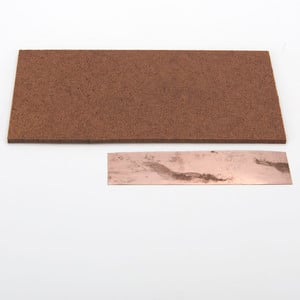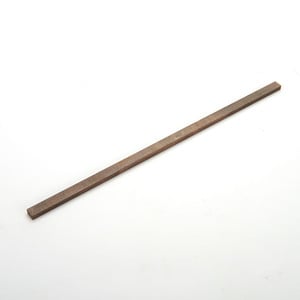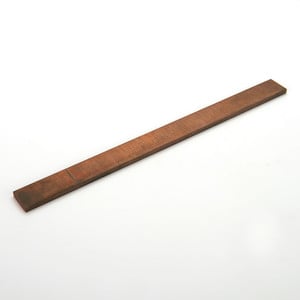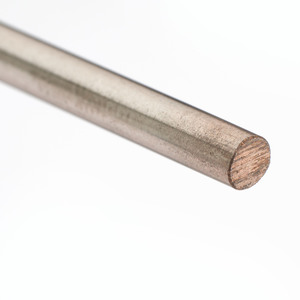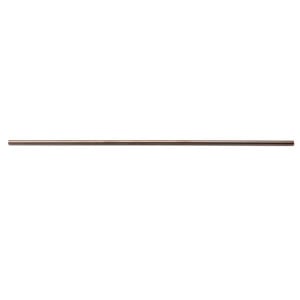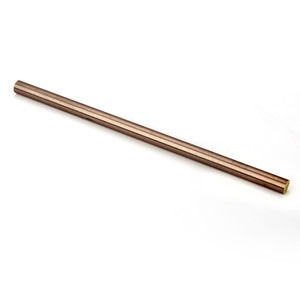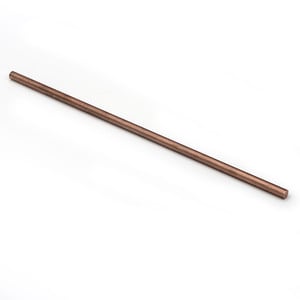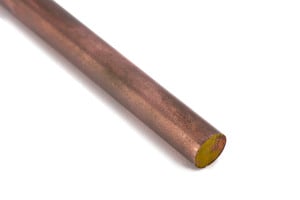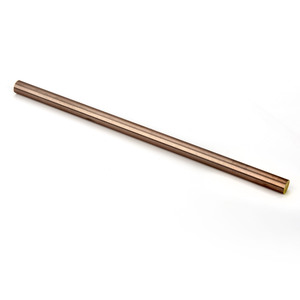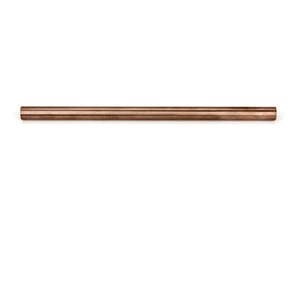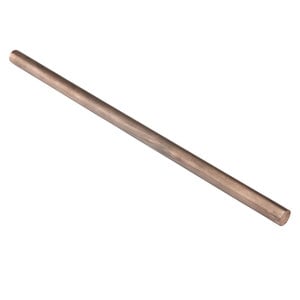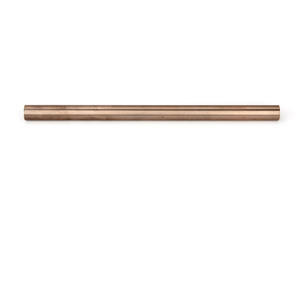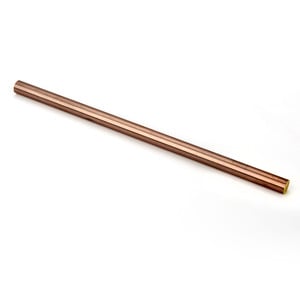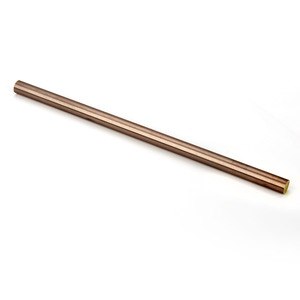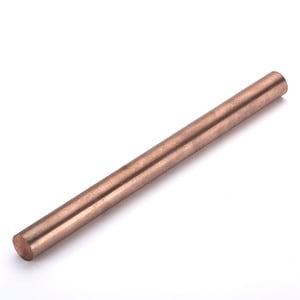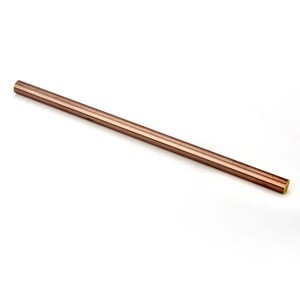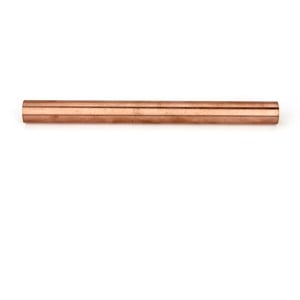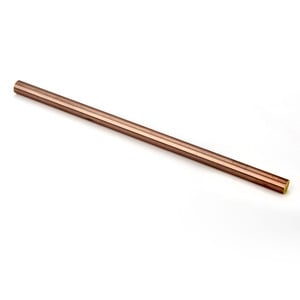Copper Tungsten
Copper Tungsten: Properties and Overview
Copper tungsten, also known as tungsten copper (CuW or WCu), is a composite material combining the distinct properties of copper and tungsten. Unlike a true alloy, copper and tungsten are not mutually soluble; instead, the material consists of discrete particles of one metal embedded in the matrix of the other. This structure is achieved through powder metallurgy: tungsten particles are pressed and sintered into a porous skeleton, which is then infiltrated with molten copper to create a dense, robust composite.
Typical compositions range from 10–50% copper by weight, with the remainder being tungsten. The specific ratio chosen depends on the desired balance between electrical/thermal conductivity (from copper) and hardness/wear resistance (from tungsten). The resulting material is heat-resistant, ablation-resistant, highly conductive, and maintains dimensional stability even under extreme conditions.
Key Physical Properties
Property
Value Range (Typical)
Density
11.85 – 16.75 g/cm³
Hardness (HB)
115 – 260
Electrical Resistivity
3.2 – 6.5 ??·cm
Thermal Conductivity
High
Melting Point
> 3,000°C (Tungsten)
Use of Copper Tungsten in Sinker EDM
Sinker Electrical Discharge Machining (EDM) is a non-traditional machining process that uses electrical discharges (sparks) to erode material from a workpiece. The process requires electrodes made from materials that can withstand repeated sparking, high temperatures, and erosive environments.
Why Copper Tungsten?
Copper tungsten electrodes are widely used in sinker EDM for machining hard, conductive materials such as carbide, stainless steel, and exotic alloys. The combination of copper’s high electrical and thermal conductivity with tungsten’s hardness and resistance to wear makes this material ideal for applications demanding fine tolerances, precision, and durability.
Typical Applications
- Machining carbide dies and molds
- EDM of high-nickel alloys and hardened steels
- Fine-detail work requiring minimal electrode wear
- High-precision components in aerospace and electronics industries
Performance in Sinker EDM
Copper tungsten electrodes excel in EDM applications where both wear resistance and electrical conductivity are critical. While pure copper offers superior conductivity, it lacks the wear resistance needed for prolonged EDM operations, especially with hard workpiece materials. Tungsten, on the other hand, is extremely wear-resistant but difficult to machine and less conductive. The CuW composite strikes a balance, providing:
- Stable sparking and energy transfer
- Reduced electrode wear (especially compared to pure copper)
- Consistent dimensional accuracy
- Ability to machine tough materials like carbide
Advantages of Copper Tungsten in Sinker EDM
- High Melting Point and Arc Resistance: With tungsten’s melting point above 3,400°C, CuW electrodes resist deformation and melting during intense EDM operations, extending electrode life.
- Excellent Wear Resistance: Tungsten’s hardness ensures the electrode maintains its shape, even after prolonged use, resulting in consistent part geometry and reduced need for electrode replacement.
- Good Electrical and Thermal Conductivity: Copper content ensures efficient spark generation and rapid heat dissipation, which is crucial for precision and minimizing thermal damage to the workpiece.
- Dimensional Stability: Low thermal expansion means the electrode retains its dimensions under high temperatures, supporting high-tolerance machining.
- Machinability: Compared to pure tungsten, copper tungsten is easier to machine into complex electrode shapes.
- Ideal for Carbide Machining: Particularly effective for EDM of carbide, where other electrode materials suffer from excessive wear or poor performance.
Disadvantages of Copper Tungsten in Sinker EDM
- Higher Cost: Tungsten is a precious metal, making copper tungsten electrodes more expensive than alternatives like graphite or pure copper.
- Lower Conductivity than Pure Copper: While conductive, CuW’s conductivity is lower than that of pure copper, which can require higher power settings for the same spark energy.
- Electrode Wear (for Carbide): Despite being the best option for machining carbide, copper tungsten still experiences noticeable wear—typically around 20% when burning carbide, although this is lower than other materials.
- Complex Manufacturing: The powder metallurgy process required to produce CuW electrodes is more complex and costly compared to simpler materials.
- Slower Material Removal Rate (MRR): Compared to graphite, copper tungsten electrodes may have a slower MRR, especially on large cavities or when speed is prioritized over surface finish.
- Potential for Porosity: Achieving a fully dense, porosity-free electrode is challenging, which can affect EDM cavity quality if not properly managed during manufacturing.
Summary Table: Copper Tungsten in Sinker EDM
Advantage
Disadvantage
High wear and arc resistance
Higher cost
Good conductivity and heat dissipation
Lower conductivity than pure copper
Dimensional stability
Electrode wear (esp. on carbide)
Machinable for complex shapes
Complex manufacturing process
Ideal for carbide and hard alloys
Slower MRR than graphite
Conclusion
Copper tungsten is a high-performance composite material that plays a crucial role in the sinker EDM process, especially when machining hard, demanding materials like carbide. Its unique combination of conductivity, wear resistance, and thermal stability make it the material of choice for precision EDM applications, despite its higher cost and some limitations in conductivity and manufacturing complexity. For applications requiring fine detail, minimal electrode wear, and the ability to machine the toughest materials, copper tungsten electrodes remain unmatched in the EDM industry.

